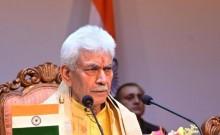A cortege carrying the remains of King Richard III was welcomed by thousands of people in the city of Leicester on 22 March after a last journey to the nearby battlefield where he was slain 530 years ago.
Discovered under a car park in 2012, Richards remains will be buried in a tomb fit for a royal at Leicester cathedral on 26 March in a ceremony led by Archbishop of Canterbury Justin Welby, the spiritual head of the Anglican Church and members of the royal family.
People waving home-made flags and holding white roses, the symbol of Richards House of York, lined Leicesters streets, determined to see the first king in British history to be exhumed and reburied.
The kings final journey culminated in a service in Leicester Cathedral on Sunday evening (22 March), at which Britains most senior Roman Catholic churchman, Cardinal Vincent Nichols, Archbishop of Westminster, preached. A crown made of base metal, like the one Richard was said to have worn on the last day of his life, was placed on the coffin, according to the order of service.
The cardinal archbishop will say a mass for Richard in the citys Holy Cross Church on 23 March. The public can view the coffin for the next few days before the remains will be reinterred at the cathedral on Thursday.
Richard was killed at Bosworth Field in 1485. He was the last English king killed in battle and his death marked the end of the War of the Roses and the beginning of the Tudor dynasty. His reburial has not been without controversy.
Arguments about whether he should be buried in his ancestral home, York, or in Leicester, have raged since his remains were dug up, ending in a high court battle between the Plantagenet Alliance, a group which included some of Richards distant descendants, and Leicesters university and council.

















